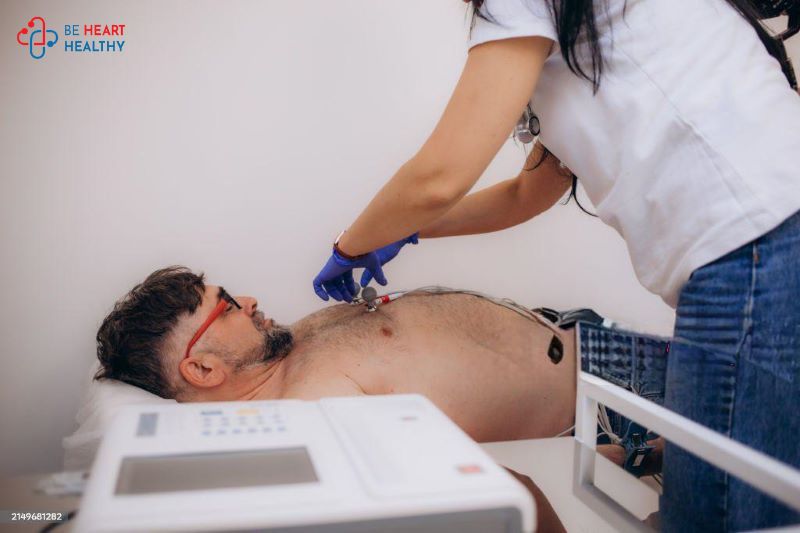It’s no secret that the heart is one of the essential body organs in every living being, and without it, no one can survive. It is responsible for pumping blood to the entire body and making our organs capable of functioning properly and as required.
A minor dysfunction of the heart can largely impact a person’s quality of life and can also cause death. Cardiovascular deaths in women are more common than all types of cancers combined.
Sadly, there are various myths about women’s heart health in people’s minds which need to be addressed. Only 44% of women realize cardiovascular disease is the greatest threat to their health. In 2020, there were 314,186 cardiac-related deaths in women.
The overwhelming situation urges the need for increasing awareness regarding cardiac health among women. In this blog, we will discuss some of the common myths and facts about women’s heart health. So, let’s get started.
4 Myths And Facts About Women’s Heart Health
Did you know that 60 million women in the United States have some form of heart disease? This shows a lack of awareness in the majority of the population regarding heart health. Let’s uncover some of the most common myths about cardiac health in women, and make cardiovascular disorder preventable.
- Mitral valve regurgitation – The mitral valve becomes leaky.
- Mitral valve prolapse – The mitral valve becomes floppy, enlarged, or stretchy, i.e., it hangs loosely.
- Mitral stenosis – Stenosis is the narrowing of the mitral valve
Myth # 1: Heart Disease Affects Older Women Only
It is true that the risk of heart disease increases with age, but it can affect women of all ages. There is no medical evidence or studies that claim or prove that heart disease only affects older women. In fact, it has been shown to affect women as young as 30 to 40 years. The rate of sudden cardiac death in women in their 30s and 40s has risen up to 30% in the last decade compared to men of the same age. However, some specific factors increase the risk of heart disease in young women, for example, obesity, smoking, hypertension, pregnancy complications, and intake of birth control pills. These are factors that, alone or in combination, make young women susceptible to getting heart disease.
Myth # 2: Heart Disease Doesn’t Occur In Fit And Athletic Women
Undoubtedly, being physically fit, eating healthy, and avoiding smoking reduce the risk of heart disease in women to a greater extent as compared to people who smoke, eat unhealthily, and have a sedentary lifestyle. But this does not guarantee that physically fit and athletic women will never have heart disease.
A physically fit woman can have high cholesterol and blood pressure, pregnancy issues, or genes for heart problems which can lead to heart disease in healthy women. For example, high cholesterol can occur in fit women if they have certain liver diseases, or genetic problems, drink alcohol, or regularly eat food high in cholesterol. These factors can lead to heart disease, despite being active and athletic.
Myth # 3: Only Severe Chest Pain Means A Heart Attack
Commonly women consider having severe chest pain as a sign of a heart attack and ignore or take all other symptoms lightly. But the truth is women may not always experience severe chest pain during a heart attack. Sometimes, a heart attack does not cause any chest pain at all. Some other common signs indicating a heart attack include dizziness, shortness of breath, pain in the shoulders or arms, intense sweating, and mild discomfort or tightness in the chest. Hence, it is crucial to consult a doctor immediately if you experience any unusual symptoms in your body to prevent an imminent attack and also death.
Myth # 4 Cardiovascular Disease Is A Man’s Disorder
People think that heart disease is more common in men or this is a man's disease. But did you know that women are two times more likely to die from heart disease than men? Here is how heart disease can affect women more than men:
● Women’s hearts are physically and structurally different from men’s.
● The size of the heart and blood vessels in women is smaller than in men.
● Childbirth can sometimes increase the risk of heart disease in women.
Both women and men carry specific risk factors that can increase the chances of heart disease, like erectile dysfunction and low testosterone levels in males and pregnancy complications or birth control pills in females. Other factors, like genes, high blood pressure, physical inactivity, smoking, and alcohol, can cause cardiovascular disease in any gender, be it male or female. Hence, cardiovascular disease is NOT a man's disorder and can occur in all individuals.



